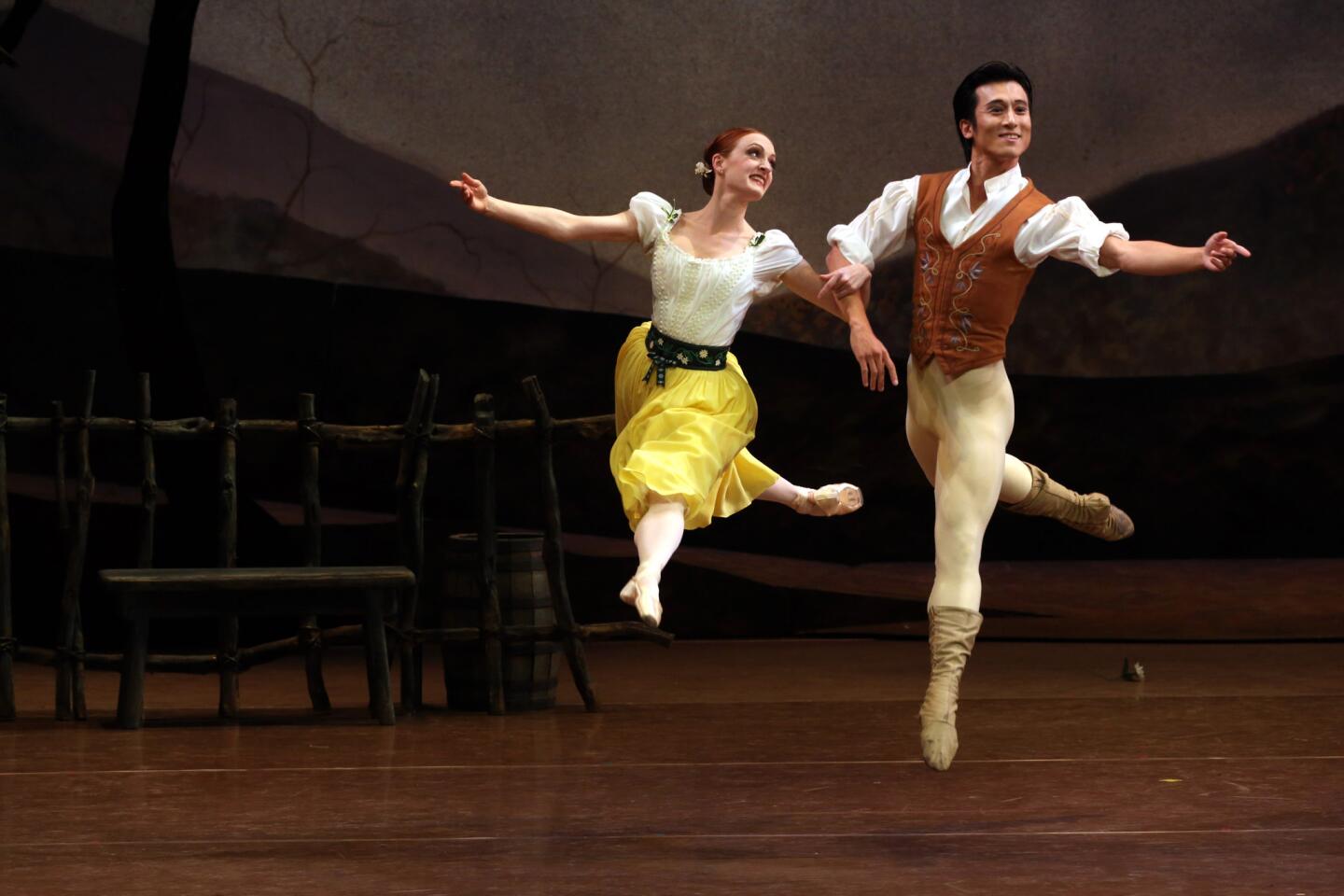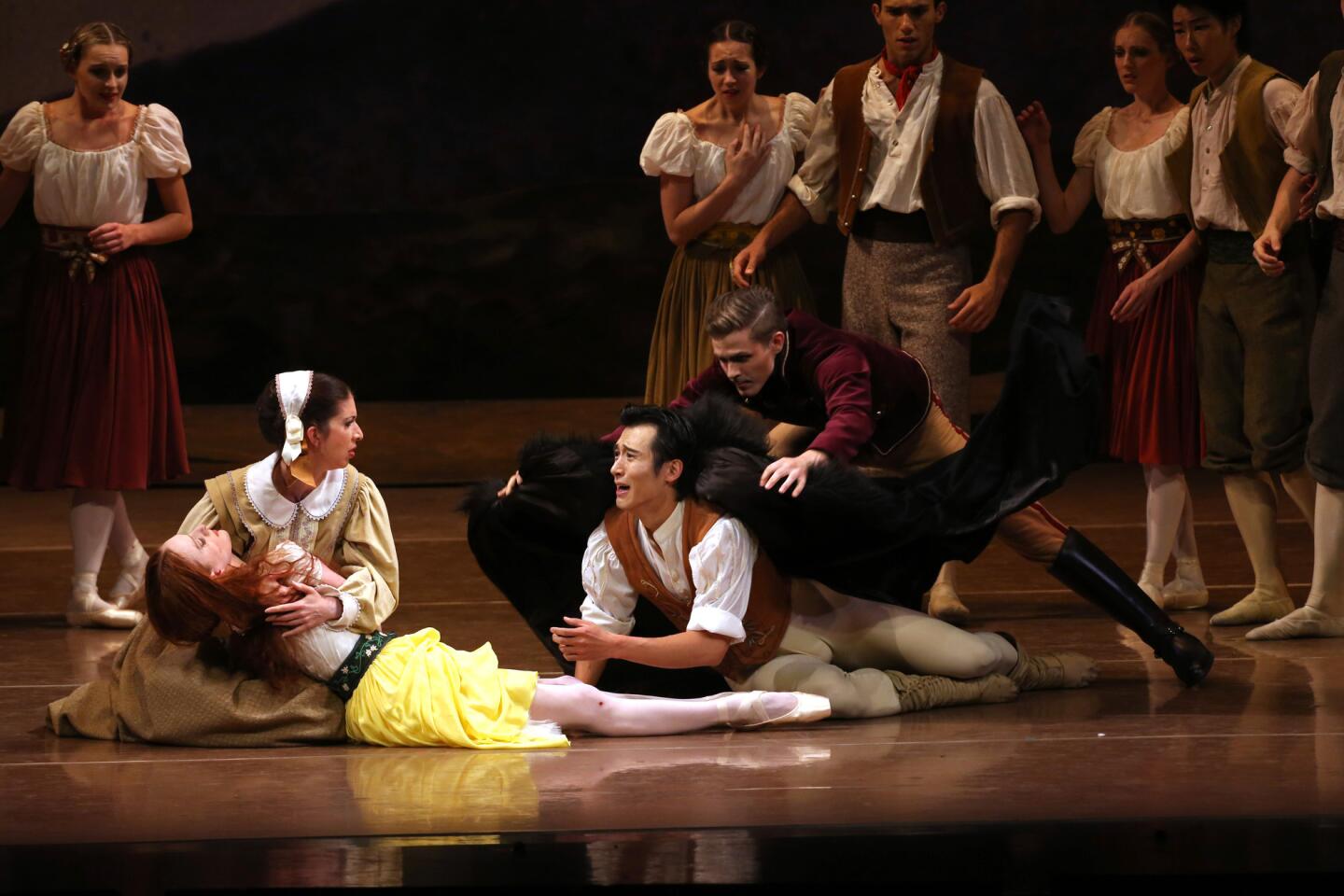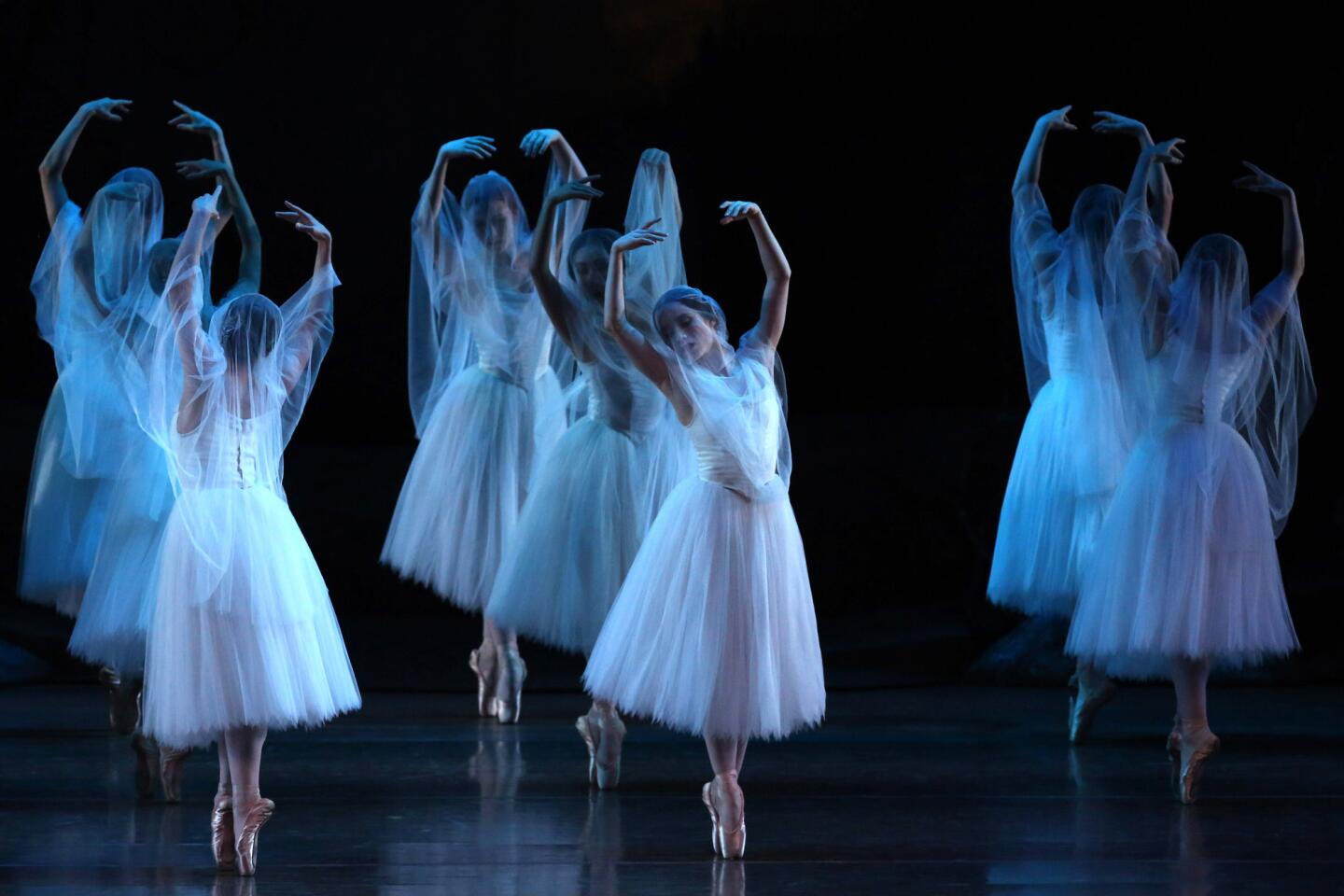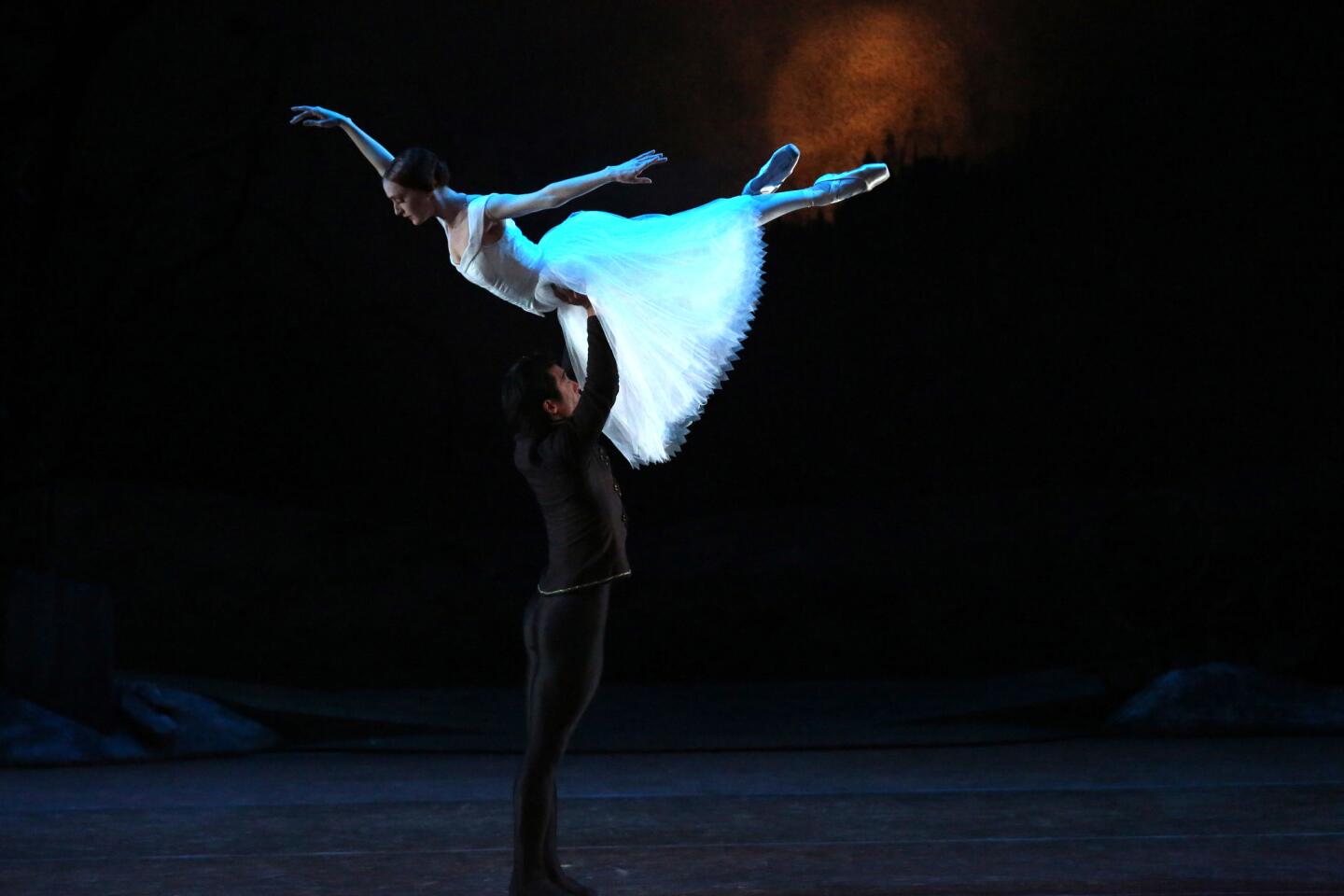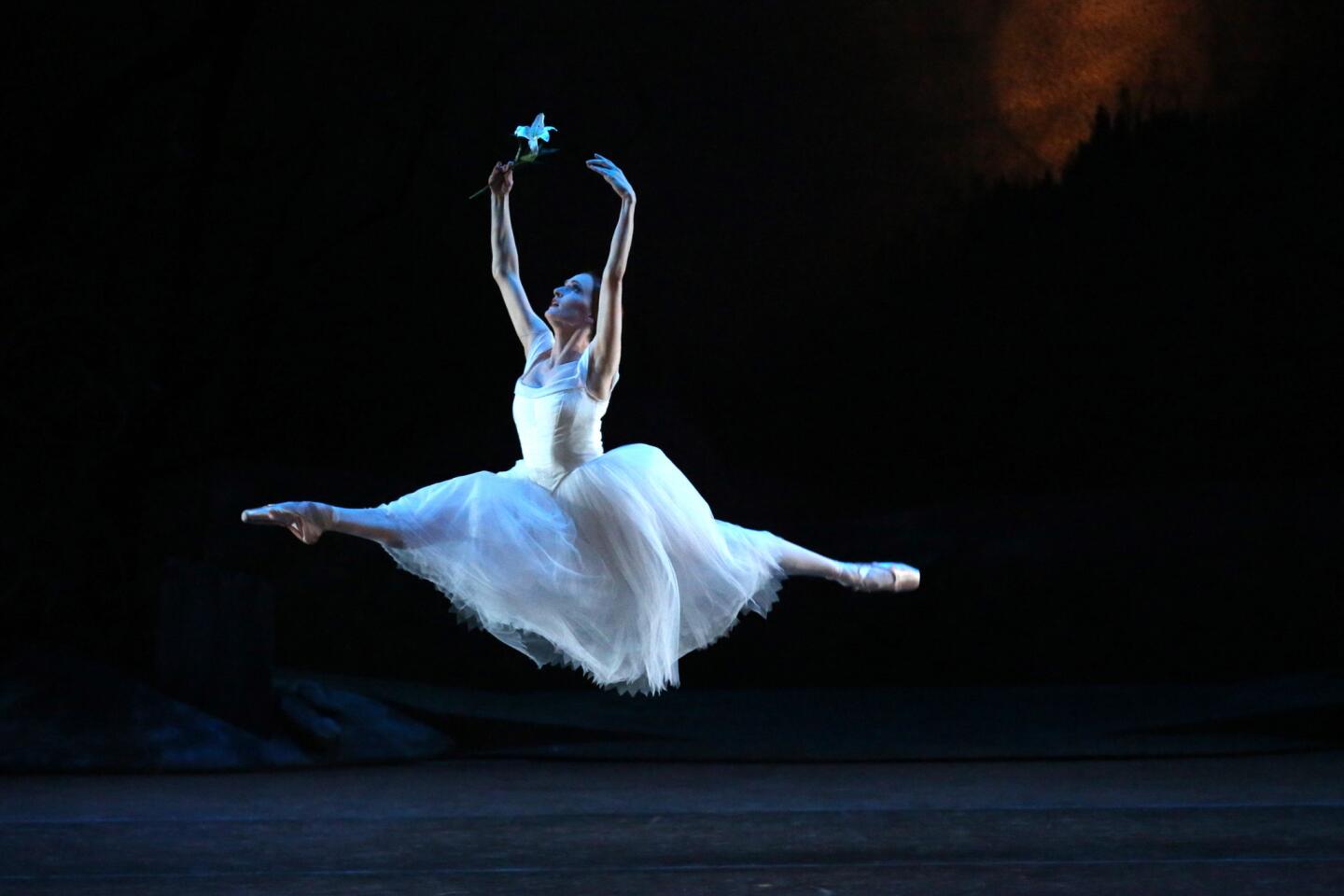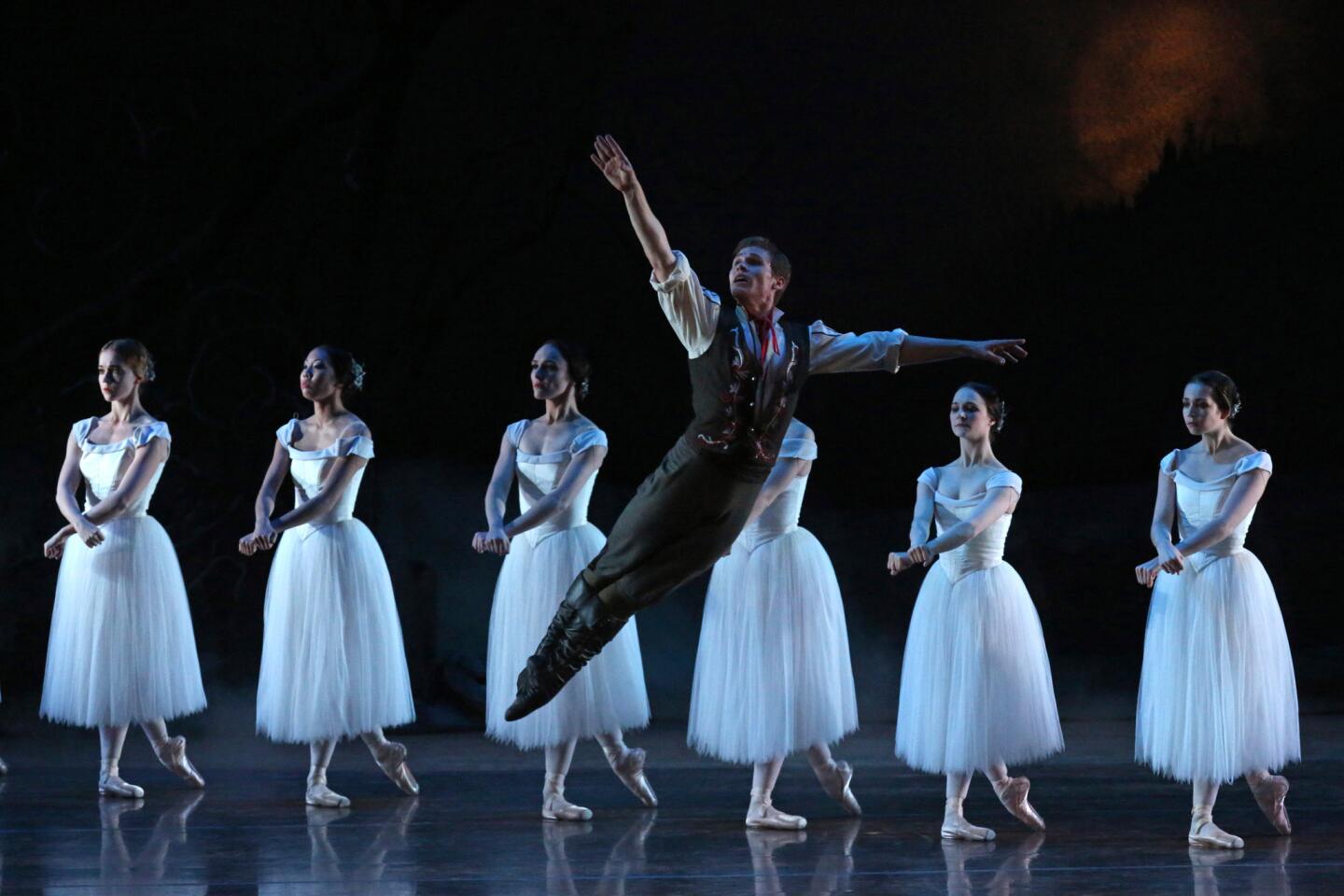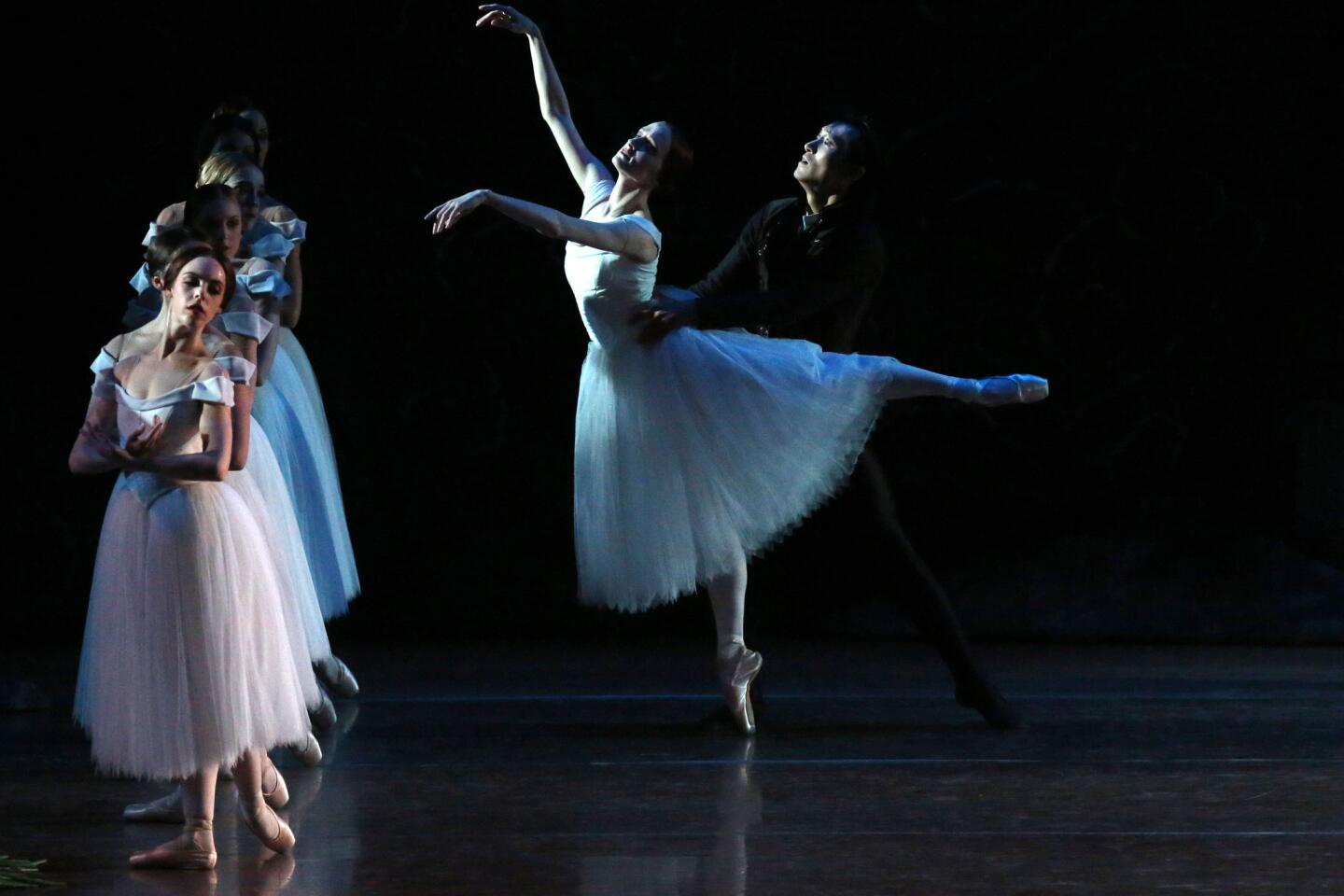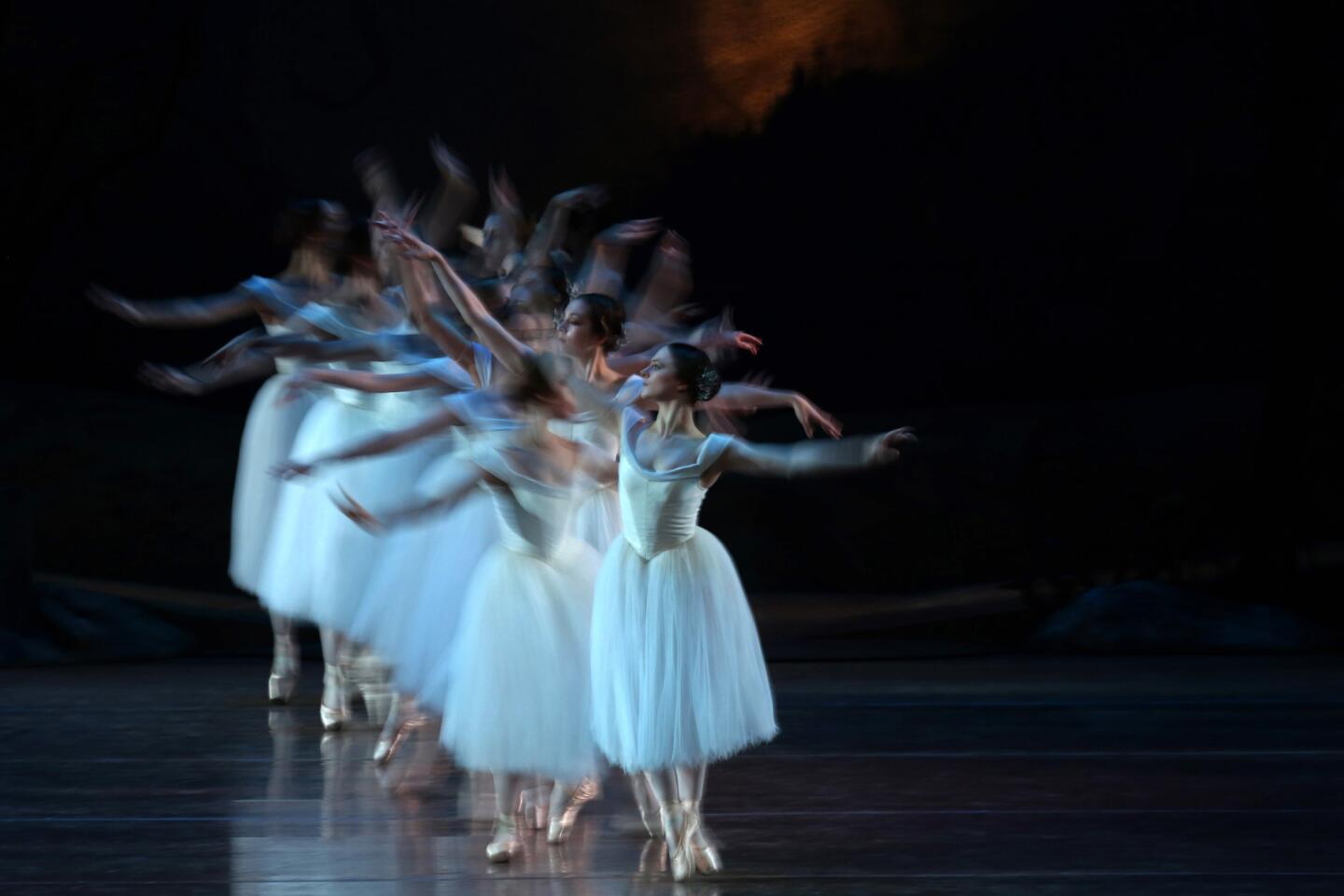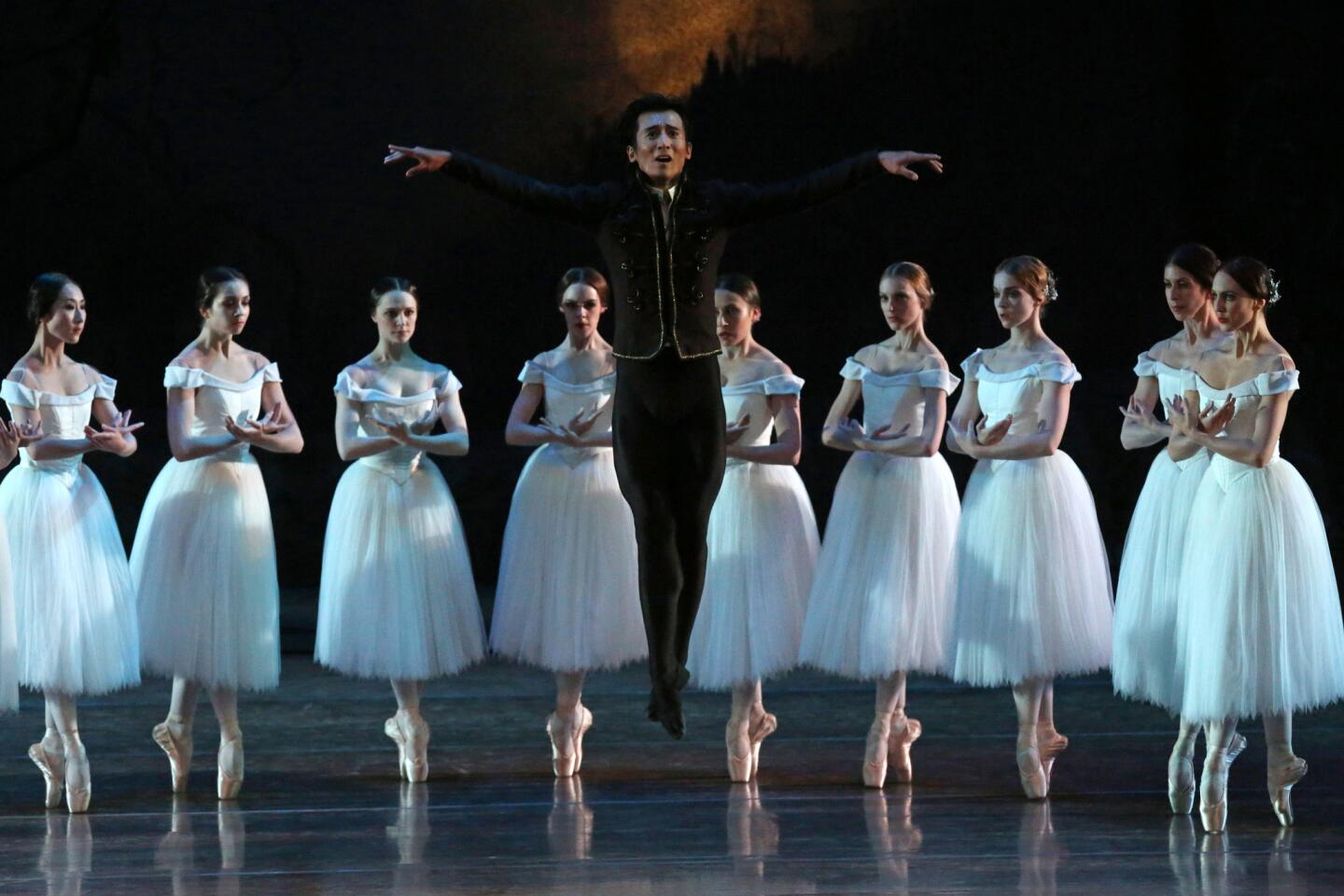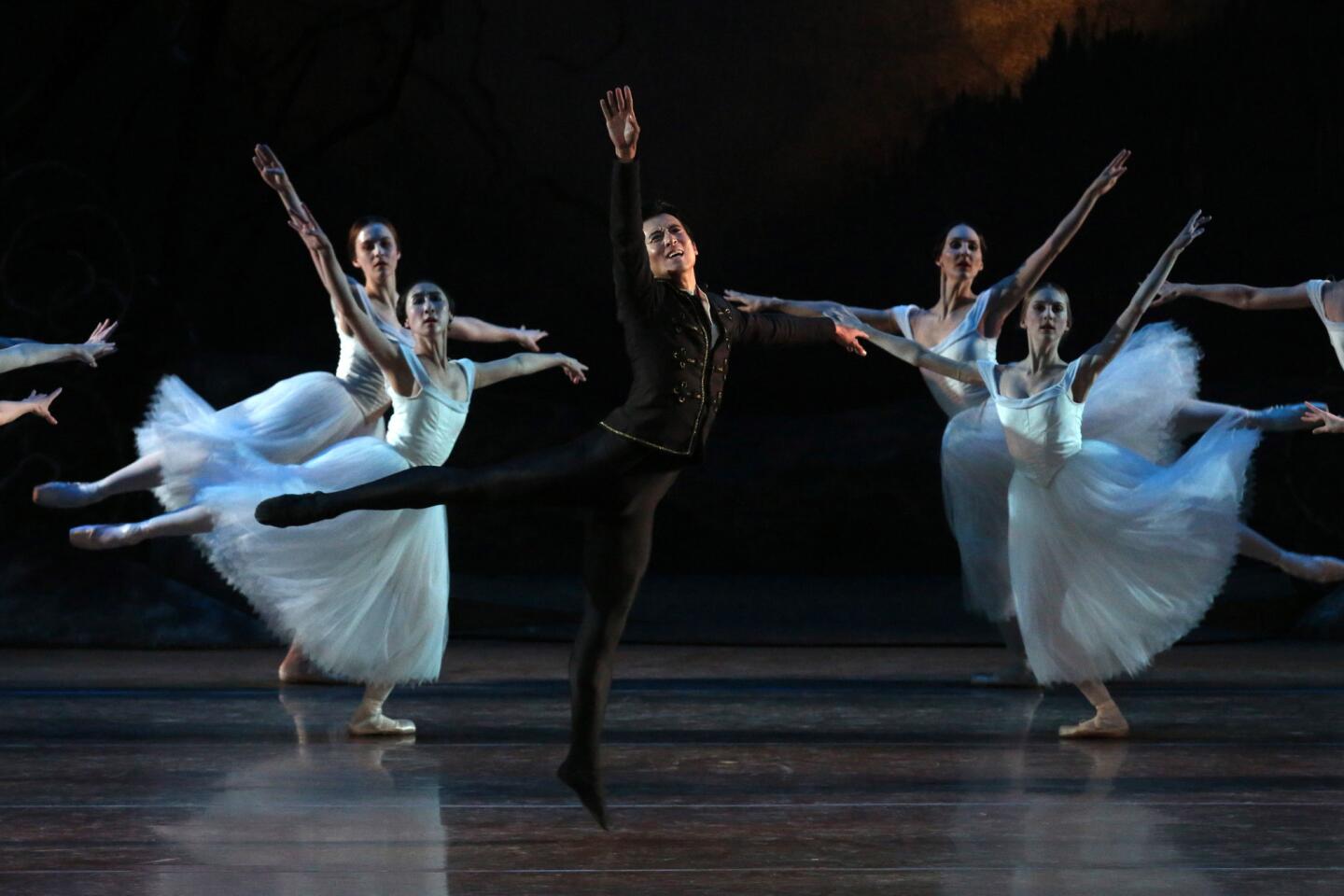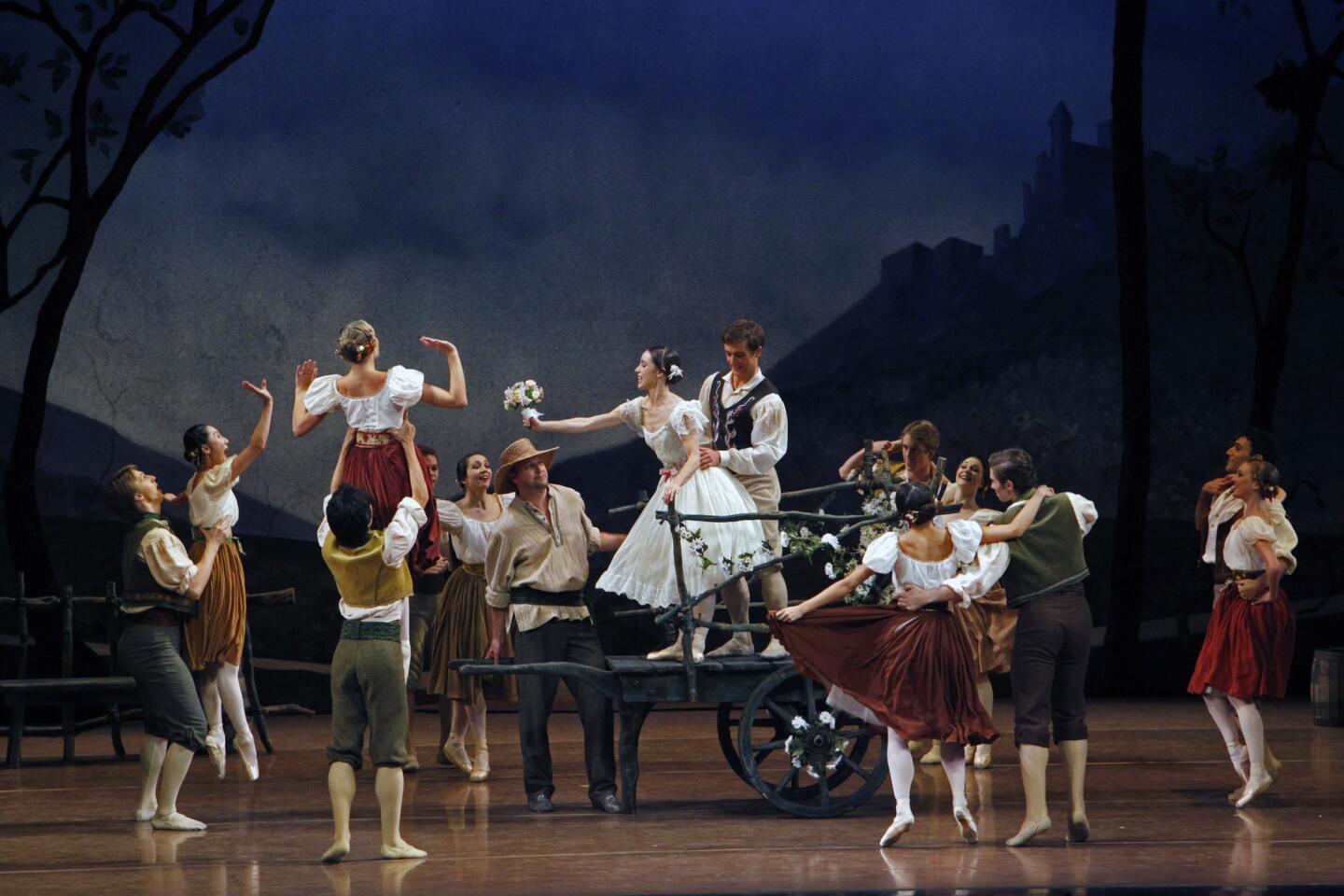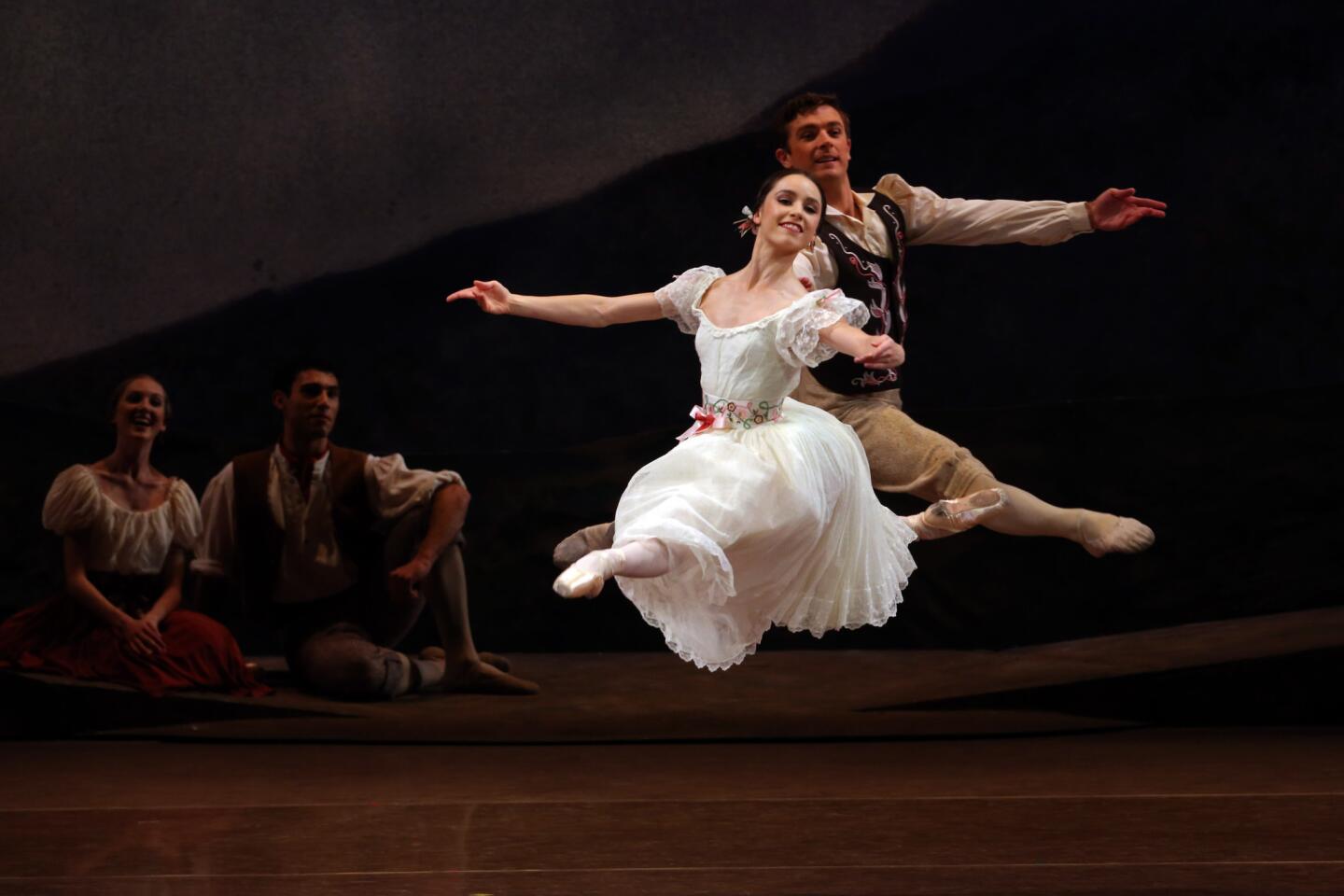Review: A reworked ‘Giselle’ from New Zealand Royal Ballet
Classic ballets change over time---sometimes radically. Take “Giselle,” the antique, tragic two-act dance drama about a peasant girl driven mad by a nobleman but who rises from her grave to save his life.
In the 1841 French original, Albrecht (her betrayer) ended up in the arms of someone else he’d betrayed: the noblewoman Bathilde. But in the revisions created in Russia by Marius Petipa in 1860, and then in the 1880s, Albrecht remained alone after his brush with death, suffering hopelessly.
The most recent revision came on Friday with the North American premiere of the Royal New Zealand Ballet “Giselle” at the Dorothy Chandler Pavilion. In this 2012 production, an aging Albrecht felt consumed with survivor guilt and returned to Giselle’s grave to accept the fate she’d saved him from.
CRITICS’ PICKS: What to watch, where to go, what to eat
However, except for this innovation—and making the whole ballet a flashback---the staging by star dancers Ethan Stiefel and Johan Kobborg proved conservative dramatically. Its major achievements came in other ways. For starters, Stiefel and Kobborg used an unusually large pit orchestra to freshen and deepen the underrated score by Adam, Burgmuller and Minkus.
What’s more, they embraced Petipa’s style so completely that the normally sedate peasant ensembles in Act 1 often attained the surging brilliance of Petipa’s national dances in “Swan Lake” and other works. Even Natalia Stewart’s costumes were updated to the Petipa era.
The dancers responded to this stylistic shift with impressive skill and vibrancy. This isn’t a large company, and the realm of vengeful female ghosts looked especially underpopulated on Friday. But everyone danced as if national honor was at stake.
PHOTOS: Arts and culture in pictures by The Times
The enhanced Petipa matrix could also explain why Gillian Murphy, a powerhouse principal from American Ballet Theatre, looked so comfortable as Giselle, a role she had never danced until the premiere of this production. Her mad scene may have been by-the-numbers, but in passages demanding speed, sustained technical control, absolute clarity of articulation and perfect placement, Murphy ruled.
Stiefel is not only artistic director of Royal New Zealand Ballet but Murphy’s offstage partner. And fitting this steely 21st-century ballerina to a role that usually belongs to a very different kind of dancer couldn’t have been easy and represents a true labor of love.
Opposite her, Chinese virtuoso Qi Huan helped make the moonstruck duets with Murphy in Act 2 seem a breathless communion. She wasn’t always weightless in his lifts, but his growing devotion to her spirit prefigured the new ending of the ballet. And he soloed magnificently.
Albrecht’s rival Hilarion isn’t normally a dancing role, but this is one 1841 hallmark that Stiefel and Kobborg restored. Jacob Chown responded to the opportunities faultlessly and made the character likable as well. Abigail Boyle danced Myrta expertly, but she seemed not so much implacable as uninvolved in her destruction of any male who invaded her domain. A little regal glee would have been welcome.
PHOTOS: Best dance moments of 2013
Lucy Green dances Giselle at both matinees in this four-performance engagement, but on Friday she and Rory Fairweather-Neylan appeared as the central figures in what used to be the Peasant Pas de Deux. Unfortunately, the staging minimized their excellence by assigning most of the showpiece choreography to Murphy, Huan and Chown until it lost its shape.
Howard C. Jones’ scenery offered the usual village ground plan, but contrasted neo-realist structures with fanciful trees and other foliage. Kendall Smith’s lighting made only the white costumes ideally visible in Act 2.
Nigel Gaynor conducted the 65-member, locally recruited orchestra with passion and suavity.
Additional performances at 7:30 p.m. Saturday and 2 p.m. Sunday.
ALSO:
New ‘Giselle’ a pas de deux by friends
A cinematic approach to Hamburg Ballet’s ‘Lilliom’
More to Read
The biggest entertainment stories
Get our big stories about Hollywood, film, television, music, arts, culture and more right in your inbox as soon as they publish.
You may occasionally receive promotional content from the Los Angeles Times.
